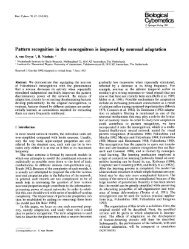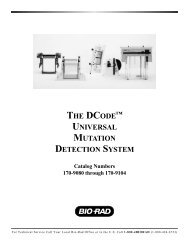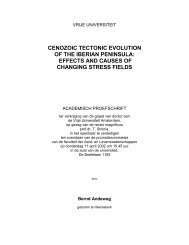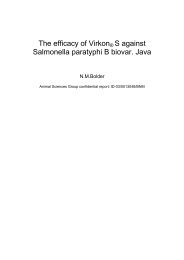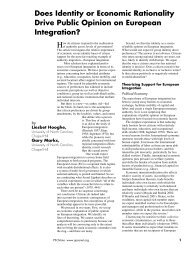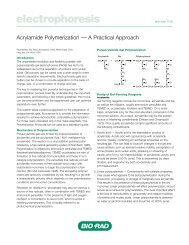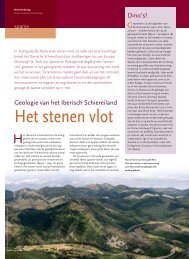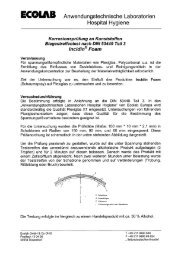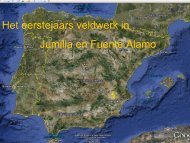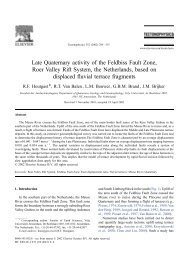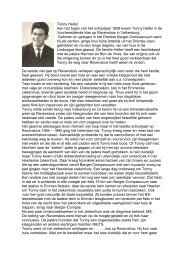5 NATURAL ABUNDANCE OF THE STABLE ISOTOPES ... - Falw.vu
5 NATURAL ABUNDANCE OF THE STABLE ISOTOPES ... - Falw.vu
5 NATURAL ABUNDANCE OF THE STABLE ISOTOPES ... - Falw.vu
You also want an ePaper? Increase the reach of your titles
YUMPU automatically turns print PDFs into web optimized ePapers that Google loves.
Chapter 7Numerically this comes to a periodic (seasonal) variation of13 Cbio13Cbioatm13 Catmbio 257.85353 0.05000perppm ofCO2(7.11)Superimposed on this phenomenon is the gradual increase in the concentration and theaccompanying decrease in 13 by the emission of fossil-fuel CO 2 . The trends are shown inFig.7.6 and can be approximated by: 13 / CO 2 = 0.015 ‰ / ppm or 13 = 0.025‰ / year (7.12)at a CO 2 concentration of 353 ppm and 13 = 7.85‰ over the Northern Hemisphere, validfor 01/01/1990.The smaller ‰/ppm value of Eq.7.12 compared to Eq.7.11 shows that the long-term trend isnot due to simple addition and mixing of additional CO 2 in the atmosphere. The large oceanicDIC reservoir is levelling out the purely atmospheric mixing effect through isotope exchange.7.1.4.6 GROUNDWATER AND RIVERWATERSoil CO 2 is important in establishing the dissolved inorganic carbon content of groundwater.After dissolution of this CO 2 the infiltrating rain water is able to dissolve the soil limestone:CO 2 + H 2 O + CaCO 3 Ca 2+ + 2HCO 3(7.13)(Fig.7.7). Because limestone generally is of marine origin ( 13 +1‰), this process results in13 of the dissolved bicarbonate of about 11 to 12‰ (in temperate climates).In the soil the HCO 3 first formed exchanges with the often present excess of gaseous CO 2 ,ultimately resulting in 13 (HCO 3 ) = 13 (soil CO 2 ) + 13 b/g 25‰ + 9‰ = 16‰ (Fig.7.5).Consequently, 13 (HCO 3 ) values significantly outside the range of 11 to 12‰ areobserved in soil water as well as in fresh surface water such as rivers and lakes. In surfacewaters such as lakes 13 C enrichment of dissolved inorganic carbon can be caused by isotopeexchange with atmospheric CO 2 ( 13 7.5‰), ultimately resulting in values of 13 + 13 b/g =7.5‰ + 9‰ = +1.5‰, identical to oceanic values. Consequently, freshwater carbonateminerals may have "marine" 13 values. In these cases the marine character of the carbonate isto be determined by 18 (Sect.7.3).In addition to HCO 3 , natural waters contain variable concentrations of CO 2 with the effectthat the 13 value of DIC is lower than that of the bicarbonate fraction alone: in groundwater(Vogel and Ehhalt, 1963), and in stream and river waters derived from groundwater (Fig.7.8)the 13 (DIC) values are generally in the range of 12 to 15‰.100



